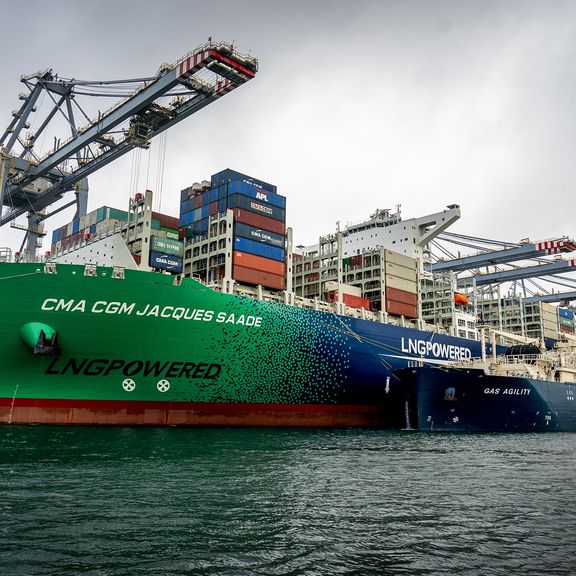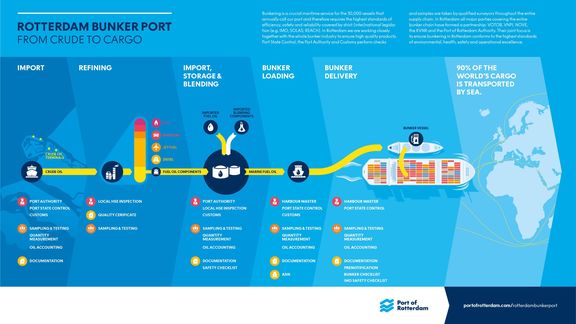
Bunkering in Rotterdam
Europe’s largest bunkering port
The port of Rotterdam is Europe’s largest bunkering port, as well as one of the top three bunkering ports worldwide. Every year, some 9,5 million tonnes of bunker fuel is supplied to vessels in Rotterdam.
In Rotterdam, every imaginable fuel can be obtained in huge quantities: from HFO to bio fuels. In addition, Rotterdam is the first port in Europe where ships can bunker LNG (liquefied natural gas).
Rotterdam bunker port
With five oil refineries and a wide range of available oil products, the port of Rotterdam is an attractive port to call on for ships that need to refuel. And moreover, since Rotterdam is a location for price-setting, bunker oil in the Dutch hub is cheaper than in most other ports. A large number of suppliers work from the port of Rotterdam, guaranteeing swift, reliable and safe bunkering at the best rates.
BUNKERPROCES
Sea-going vessels can continue to load and unload cargo when they bunker at one of Rotterdam’s terminals. In addition to bunkering at a terminal, it is also possible to bunker at one of the special public transhipment facilities (buoys and dolphins). At one specific dolphin set, LNG transhipment has priority over other forms of cargo handling.

Bunker license for bunker fuel transporter
The bunker license transporter is compulsory for bunker ships which supply fuel oil and (bio)diesel to seagoing vessels with the aim of bunkering these fuels in a safe, correct and environmentally responsible manner. If you have any questions regarding this, please contact Ron van Gelder, senior advisor at the Harbour Master's Division.
Downloads
Quality and sustainability are top priority
Deliveries in the port are safe, efficient and ecologically responsible, and are handled by some 180 different (often double-hull) bunker ships. The largest vessels can transport over 13,000 tonnes at a time. As the organisation responsible for the port’s maritime management, the Port Authority ensures that the bunker fuel is transferred safely and correctly. A bunkering checklist helps suppliers to choose the right approach. At the same time, the Port Authority is a strong advocate of optimising bunkering lead times. The Human Environment and Transport Inspectorate (a division of the Ministry of Infrastructure and the Environment) regularly inspects operations on behalf of the Dutch government.
Alternative, clean fuels
As a port, the only way to create room for further growth is to become a clean port. The Port Authority works to encourage more sustainable shipping. That is why the Port Authority is stimulating new, sustainable developments in the bunker sector – and taking the lead wherever possible. One of our initiatives in this area is encouraging the transition from HFO to LNG (liquefied natural gas) as a shipping fuel.
Increase reliability of the bunkering sector
Since April 2013 a sector-wide cooperation between the Port Authority, the Association The Port Authority, the Association of Dutch Tank Storage Companies (Votob), the Netherlands Petroleum Industry Association (VNPI) and NOVE (Netherlands Organisation for the Energy Industry) work together intensively to better ensure the quality and quantity of bunkers. We are also working to make the bunker process more transparent and efficient.
More information? Contact:
